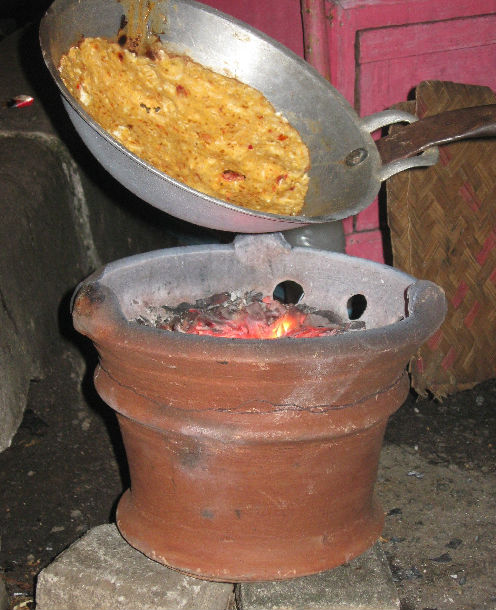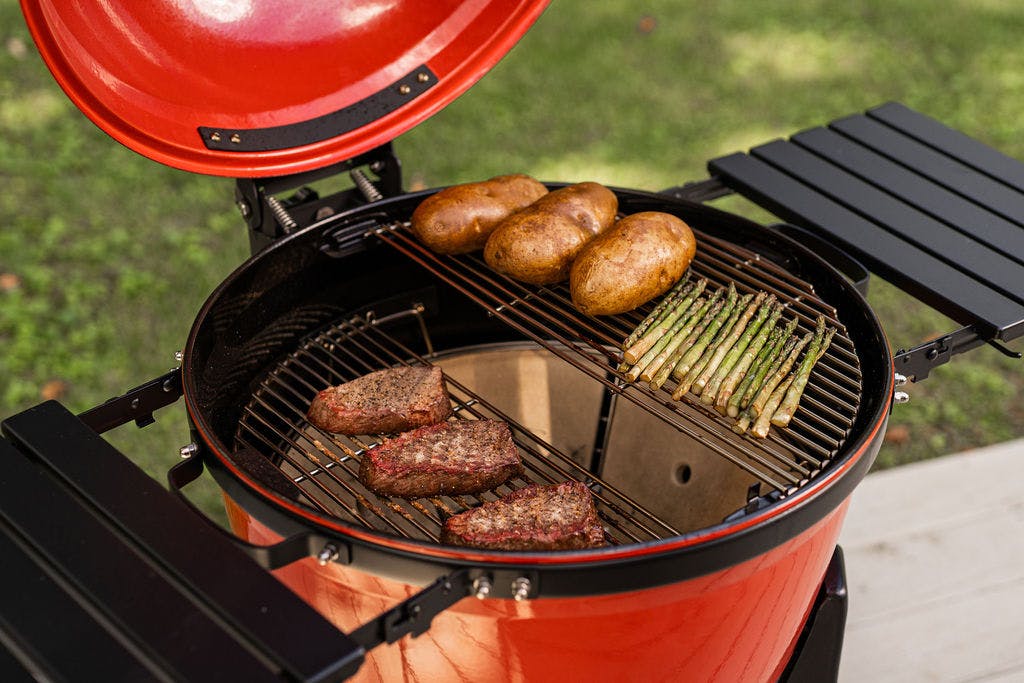Kamado grills have a history that spans over 3,000 years, with roots in ancient Asia. The term "Kamado" originates from a Japanese word meaning "stove" or "cooking range." However, the Kamado grill as we know it today has its early beginnings in China. The ancient Chinese created the "Yan steamer," a clay cooking vessel that served as an early oven.
This vessel eventually made its way to Japan, where it evolved into the mushikamado during the Kofun period (300–538 AD). Primarily used for steaming rice, the mushikamado became integral to Japanese culinary practices. These early models relied on wood or charcoal, setting the foundation for the distinct, smoky cooking style that characterizes Kamado grilling.
The Japanese Evolution of Kamado Grills
The Japanese further refined the clay cooking vessel by adding domed lids and airflow control features, critical components of today’s Kamado grill. By the early 20th century, the Kamado grill had gained popularity in Japan for cooking rice and other staple foods.
A key feature of Kamado grills is their heat-retaining ability. Made from clay or ceramic, these grills absorb and radiate heat evenly, enabling slow cooking that enhances flavor. The design maintains steady temperatures over long cooking times, infusing food with rich, smoky flavors while preserving moisture.
Kamado Grills Cross Over to the West
Kamado grills gained popularity in the West after World War II, when American servicemen stationed in Japan discovered their versatility and brought them home. In 1954, Ed Fisher founded Big Green Egg, one of the first companies to market Kamado grills in the United States. Fisher adapted the Japanese Kamado design, using durable ceramic materials that improved heat efficiency.
The success of Big Green Egg opened the door for other manufacturers, sparking global demand for Kamado grills. While Big Green Egg remains a leader in the industry, brands like Kamado Joe, Primo Grills, and Vision Grills have expanded the market, offering numerous options for grill enthusiasts.
Why Kamado Grills Excel in Cooking: The Science Behind the Design
One of the standout features of Kamado grills is their impressive heat retention. The thick ceramic or clay walls trap heat, creating a stable cooking environment ideal for various techniques, from high-heat grilling to low-and-slow barbecuing.
Kamado grills use dual air vents for precise temperature control, with one vent at the bottom and another at the top. Proper vent adjustments allow for a wide temperature range, from 200°F for smoking to over 700°F for searing.
The egg-shaped design enhances airflow within the cooking chamber. Heat circulates up and around the food, creating a convection effect that cooks food evenly. This unique airflow allows for versatile cooking styles, including grilling, smoking, roasting, and even baking.
Modern Enhancements in Kamado Grills
Though the core design of Kamado grills remains true to its origins, modern manufacturers have introduced features that improve the cooking experience. For instance, Kamado Joe’s divide-and-conquer system lets users cook different foods at varying temperatures simultaneously.
Other innovations include heat deflector plates for indirect cooking, rotisseries for even cooking of large meats, and smart temperature controllers for consistent temperatures with minimal effort.
Today, Kamado grills come in sizes ranging from compact, portable models to large, family-sized grills. Accessories such as pizza stones, griddles, and wok attachments add to their versatility, making Kamado grills suitable for various outdoor cooking needs.

The Rising Popularity of Kamado Grills
Kamado grills have seen a resurgence in popularity among barbecue enthusiasts and chefs for several reasons:
- Versatility: Capable of grilling, smoking, baking, and roasting, Kamado grills excel in both high-heat searing and low-and-slow cooking, making them a favorite among backyard chefs.
- Durability: With their ceramic construction, models like Big Green Egg and Kamado Joe are built to withstand the elements, ensuring long-lasting performance.
- Flavor: Kamado grills deliver a rich, smoky flavor that is difficult to replicate with gas or electric grills, thanks to the charcoal and ceramic environment.
- Heat Efficiency: The heat retention capabilities of Kamado grills reduce charcoal consumption, making them both cost-effective and eco-friendly.
- Community: A dedicated Kamado grilling community thrives through online forums and competitions, where enthusiasts share tips, recipes, and techniques, celebrating the art of Kamado cooking.

Conclusion: Kamado Grills – A Lasting Culinary Tradition
The journey of Kamado grills from ancient clay vessels to modern outdoor cooking essentials speaks to their enduring appeal. With their heat-retentive design, precise temperature control, and ability to enhance flavors, Kamado grills have secured their place in the outdoor cooking world. Whether you're an experienced pitmaster or a grilling novice, a Kamado grill offers a timeless, dependable, and flavorful cooking experience that stands the test of time.
